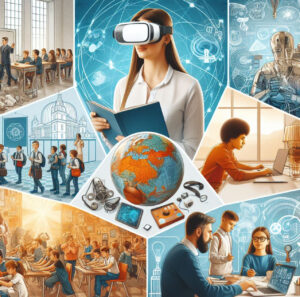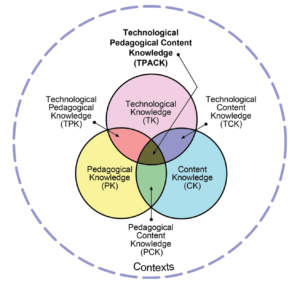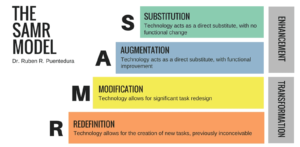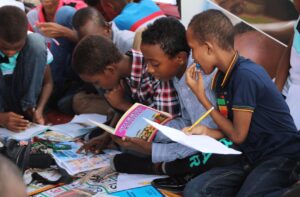

How to Teach Effectively in a Diverse and Digital World
What is teaching in the 21st century like? It is now the 21st century, and we all know that there is a vast difference in how we received our education in the past and how we are delivering one nowadays. Upon entering your classroom, you’ll observe diverse students from various backgrounds, each with unique interests, abilities, and needs. While some access online resources via laptops, tablets, or smartphones, others prefer reading books, taking notes, or working on projects. You’ll notice that some students work collaboratively while others work independently. Some may come up with queries, while others seek feedback from classmates or online mentors. This classroom setup may evoke a range of emotions within you, but it is essential to consider how to teach best and guide these students effectively.


Challenges in Teaching in the 21st Century
- Keeping up with the rapid changes in technology, society, and the world;
- Meeting the diverse and evolving learning needs and preferences of students;
- Balancing the demands of curriculum, standards, and assessments with the goals of creativity, innovation, and critical thinking;
- Promoting equity, inclusion, and social justice in the classroom and beyond;
- Developing professional skills and competencies in a complex and dynamic educational landscape.


Opportunities in Teaching in the 21st Century
- Leveraging technology to enhance learning and teaching experiences, outcomes, and opportunities;
- Engaging students in authentic, meaningful, relevant learning activities that connect to their lives and interests;
- Fostering a culture of collaboration, communication, and feedback among students, teachers, and other stakeholders;
- Empowering students to take ownership of their learning and become lifelong learners and global citizens;
- Growing as a reflective, adaptive, and innovative teacher and learner.


Strategies in Teaching in the 21st Century
In this article, we will explore some critical skills and strategies teachers need to overcome the challenges and seize teaching opportunities in the 21st Century.
Technology Integration
Technology is an integral part of the 21st Century. It has transformed how we communicate, access, create, and share information. It has also opened up new possibilities for learning and teaching, such as:
- Providing access to a wealth of online resources, tools, and platforms that support learning and teaching in various domains and disciplines.
- Enabling personalized, differentiated, and adaptive learning and teaching that cater to students’ needs, preferences, and pace.
- Enhancing collaboration, communication, and feedback among students, teachers, and other stakeholders across time and space.
- Supporting inquiry, problem-solving, and project-based learning and teaching that engages students in authentic, meaningful, and relevant tasks and challenges.
- Developing digital literacy, citizenship, and leadership skills that prepare students for the digital age.


However, technology integration is a complex matter of using devices or software in the classroom. It requires teachers to:
- Select and evaluate appropriate technology tools and resources that align with the learning objectives, content, and context.
- Plan and design effective technology-enhanced learning and teaching activities that promote student engagement, interaction, and achievement.
- Implement and facilitate technology-enhanced learning and teaching activities that support student autonomy, collaboration, and feedback.
- Monitor and assess student learning, teaching outcomes, and processes using technology tools and data.
- Reflect and improve on their technology integration practices and professional development.
Some of the teaching strategies for technology integration are:
- TPACK framework – guides your technology integration decisions and practices. This framework suggests that effective technology integration requires the interplay of three types of knowledge: technological, pedagogical, and content.


- SAMR model– evaluates and improves your technology integration practices. The SAMR model suggests that technology integration can have four levels of impact: substitution, augmentation, modification, and redefinition.


- ISTE Standards for Educators and ISTE Standards for Students– define and measure your technology integration goals and outcomes. Furthermore, it provides a framework and indicators for the skills and competencies educators and students need in the digital age.
- Use online platforms like Google Classroom, or Microsoft Teams to create and manage your online learning and teaching environment. These platforms allow you to share resources, assign tasks, communicate, and provide feedback to your students and colleagues.
- Utilize online tools like Kahoot, Quizlet, or Padlet to create and use interactive, engaging learning and teaching materials and activities. These tools allow you to make quizzes, flashcards, polls, boards, and more that can enhance student learning and participation.
Student Diversity
Student diversity is a reality of the 21st Century. Students come from different backgrounds, cultures, languages, abilities, and interests. They also have different learning styles, preferences, and needs. In addition, it can be a source of richness and strength, but it can also pose some challenges, such as:
- Addressing the gaps and disparities in student achievement and opportunity.
- Providing equal access and support to all students, especially those who are marginalized, disadvantaged, or underrepresented.
- Respect and value each student’s diversity, uniqueness, and contributions.
- Fostering a sense of belonging and community among students and teachers.
- Developing intercultural competence and awareness among students and teachers.


However, student diversity also offers many opportunities, such as:
- Leveraging students’ and teachers’ diverse perspectives, experiences, and resources to enhance learning and teaching.
- Engaging students in multicultural, multilingual, and multidisciplinary learning and teaching that broadens their horizons and perspectives.
- Empowering students to express their identities, voices, and opinions in the classroom and beyond.
- Encouraging students to collaborate, communicate, and learn from each other and other cultures and communities.
- Preparing students to live and work in a diverse and globalized world.
Inclusive Education
Inclusive education is a vision and a practice of ensuring that all students have equal access and opportunity to quality education that meets their diverse needs and potential. It is based on equity, diversity, and human rights principles. It requires teachers to:
- Recognize and respect the diversity and uniqueness of each student and their learning needs and preferences.
- Provide appropriate and differentiated instruction, support, and assessment that cater to each student’s strengths, challenges, and goals.
- Create and maintain a safe, supportive, and collaborative learning and teaching environment that fosters a sense of belonging and community among students and teachers.
- Promote and model positive attitudes, values, and behaviors that respect and value diversity and inclusion.
- Collaborate and communicate with students, parents, colleagues, and other stakeholders to ensure the participation and success of all students.


Some of the teaching strategies for inclusive education are:
- The Universal Design for Learning (UDL) framework guides inclusive education practices. Similarly, it suggests that inclusive education requires three types of flexibility: multiple means of representation, action and expression, and engagement.
- Use the Response to Intervention (RTI) model to provide tiered instruction, support, and assessment to all students. Moreover, it suggests that inclusive education requires three levels of intervention: core instruction, targeted intervention, and intensive intervention.
- Employ the Differentiated Instruction (DI) approach to tailor your instruction, support, and assessment to your students’ diverse needs and preferences. The DI approach suggests that inclusive education requires four elements of differentiation: content, process, product, and learning environment.
- Utilize Cooperative Learning (CL) to engage students in collaborative and interactive learning and teaching activities. The CL method suggests that inclusive education requires five elements of cooperation: positive interdependence, individual accountability, promotive interaction, social skills, and group processing.
- Make use of the Culturally Responsive Teaching (CRT) strategy to connect your instruction, support, and assessment to your students’ cultural backgrounds, experiences, and interests. In addition, it suggests that inclusive education requires three dimensions of cultural responsiveness: academic achievement, cultural competence, and sociopolitical consciousness.
Conclusion
Hence, teaching in the 21st Century is an incredibly fulfilling profession that demands dedication and perseverance. It presents various challenges but also provides numerous opportunities for growth and success. To make the most of these opportunities, educators must develop and implement diverse skills and techniques. By incorporating technology, embracing diversity, and promoting inclusion, teachers can create a more engaging, equitable, and thriving learning environment for themselves and their students.
If you have any questions or comments on Teaching in the 21st Century: Opportunities and Challenges, please leave them below. Thanks for reading, and I’ll see you at the next one!
Other References:
American University of Leadership. July 5, 2023. The Challenges of Teaching in the 21st Century. https://www.aulm.edu.eu/the-challenges-of-teaching-in-the-21st-century/
International Society for Technology in Education. 2019. ISTE standards for educators. https://iste.org
CAST. 2018. Universal design for learning guidelines version 2.2. CAST website
Cecilia Jansen, et.al. 2015. Teaching Practice in the 21st Century: Emerging Trends. https://files.eric.ed.gov/fulltext/EJ1056080.pdf
Gay, G. 2010. Culturally responsive teaching: Theory, research, and practice (2nd ed.). New York, NY: Teachers College Press.
Koehler, M. J., & Mishra, P. 2009. What is technological pedagogical content knowledge (TPACK)? Contemporary Issues in Technology and Teacher Education, 9(1), 60-70. https://citejournal.org
Fuchs, D., & Fuchs, L. S. 2006. Introduction to response to intervention: What, why, and how valid is it? Reading Research Quarterly, 41(1), 93-99. Retrieved from Reading Research Quarterly website
Tomlinson, C. A. 2001. How to differentiate instruction in mixed-ability classrooms (2nd ed.). Alexandria, VA: Association for Supervision and Curriculum Development.
La Trobe University. (n.d.). Teaching in the 21st Century: Challenges, key skills, and innovation. https://www.latrobe.edu.au/nest/teaching-in-the-21st-century-challenges-key-skills-and-innovation/
Organization for Economic Cooperation and Development. (n.d.). How can we support teaching strategies for the 21st Century? https://www.oecd-ilibrary.org/education/teaching-for-the-future/how-can-we-support-teaching-strategies-for-21st-century-learners_9789264293243-6-en




